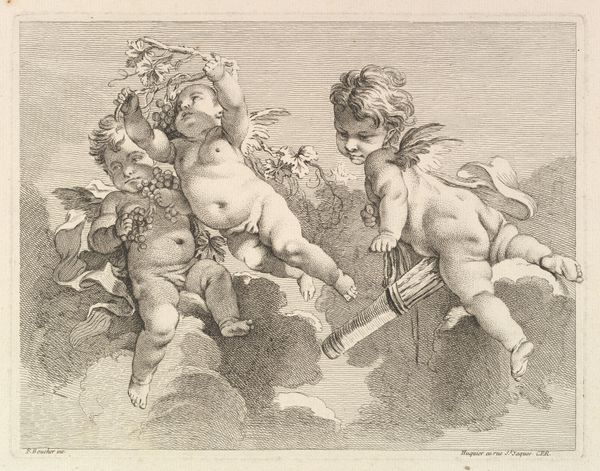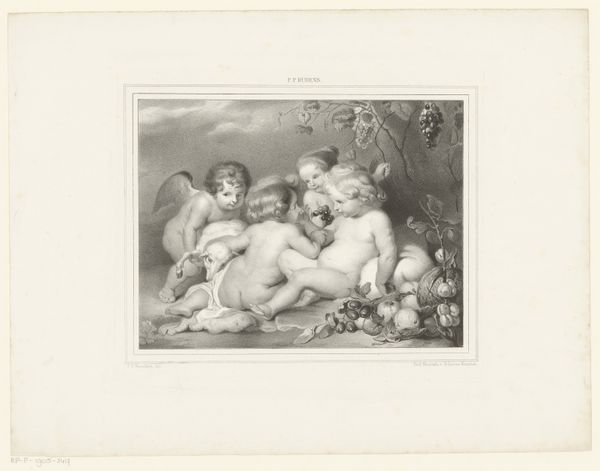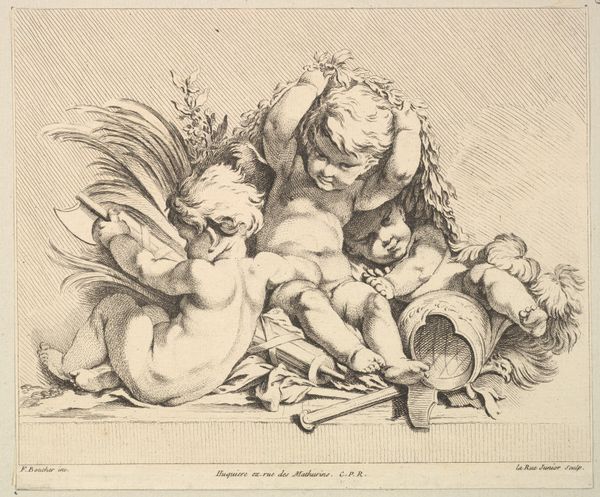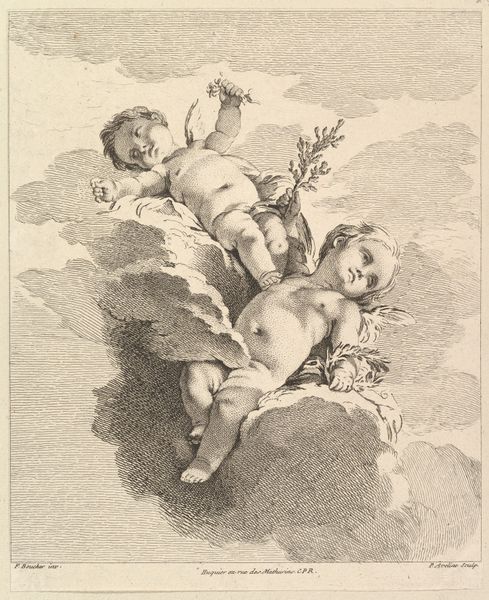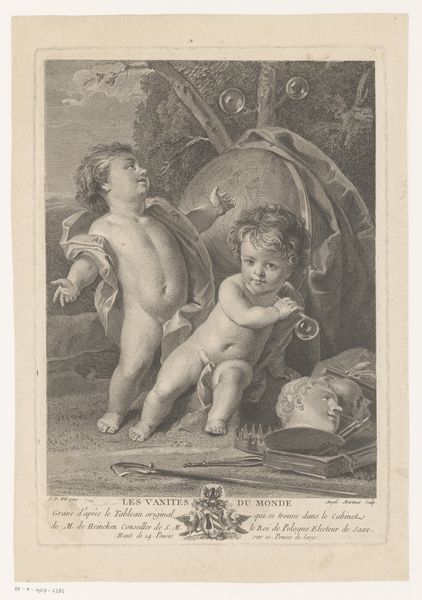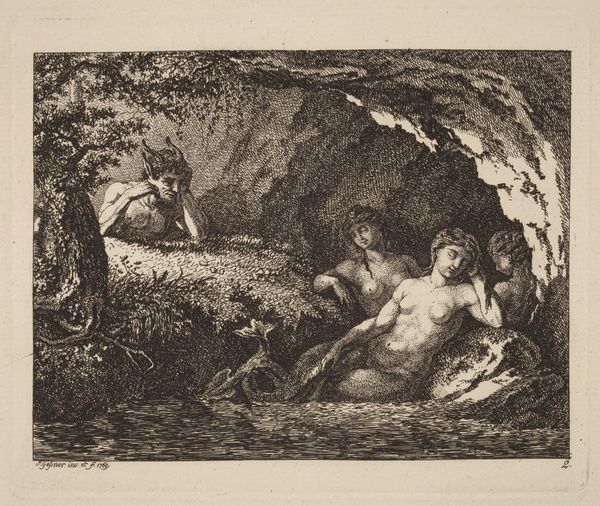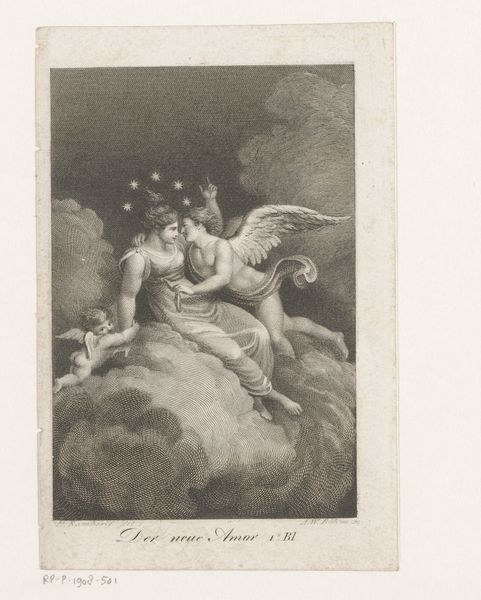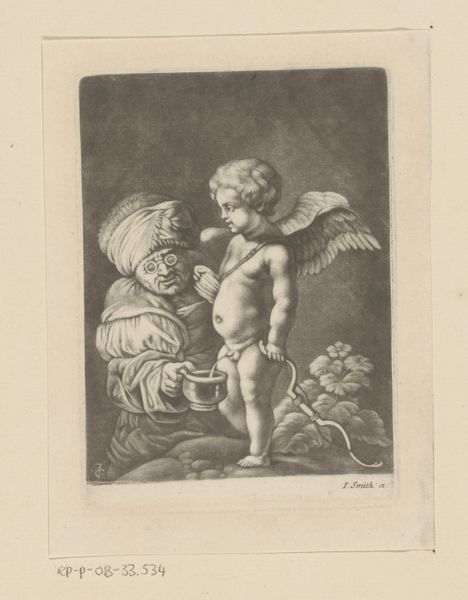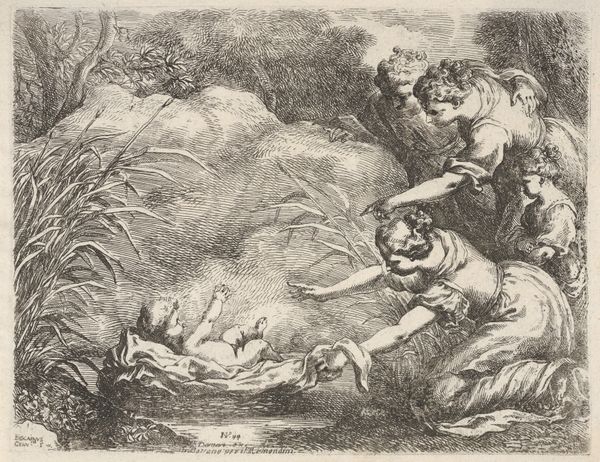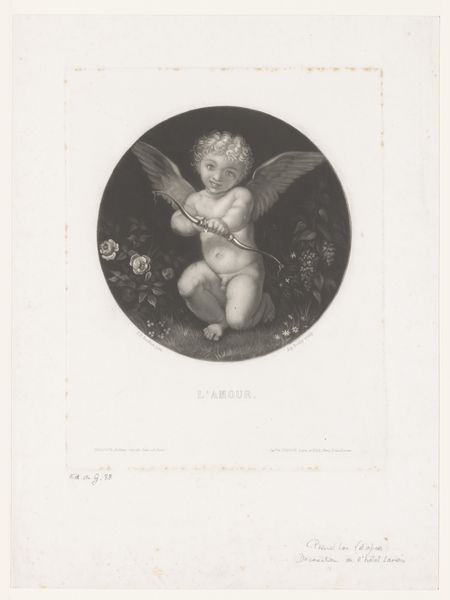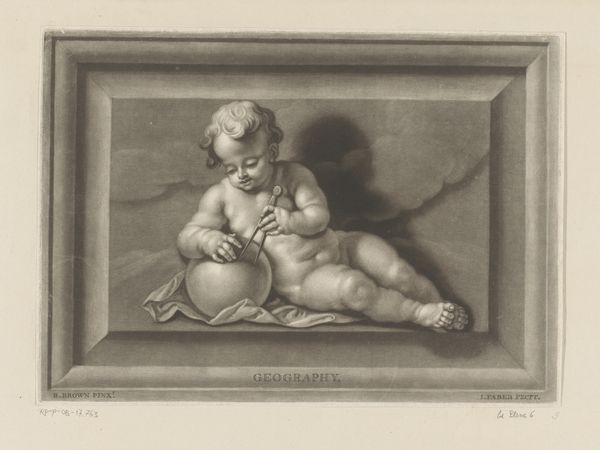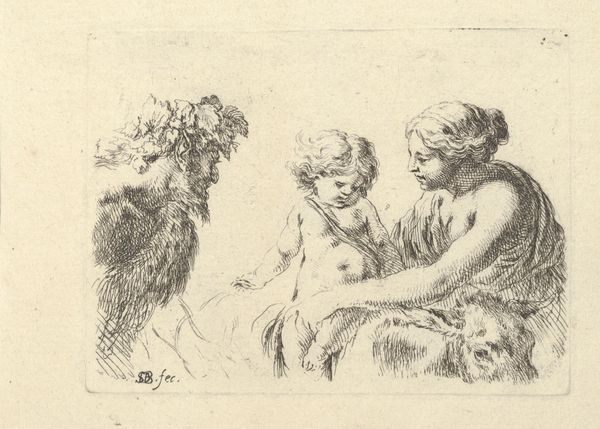
print, fresco, photography
#
portrait
# print
#
fresco
#
photography
#
italian-renaissance
Dimensions: height 193 mm, width 241 mm
Copyright: Rijks Museum: Open Domain
Curator: Here we have a photo reproduction of "Engelen" by Melozzo da Forli, originating from Rome, and believed to have been produced between 1880 and 1910. It shows Italian Renaissance fresco techniques, transferred into a photographic print. Editor: Immediately, I’m struck by its gentle melancholy. The monochrome adds a timeless quality. It's ethereal and otherworldly, even though it is a reproduction, presented through photography! Curator: Indeed. The materiality is fascinating – to translate the rough texture of a fresco, traditionally painted on walls with the use of lime plaster, into the smooth surface of a photographic print raises interesting questions. How did the photographer deal with capturing a work inextricably linked to its architectural context? Editor: The image is full of soft imagery – the cherubic angels. Their downward glances suggest humility and reflection. Throughout Western art, angels serve as powerful symbols of divinity, messengers from on high, acting here almost as guardians or observers. The image feels like a meditation. Curator: It's intriguing how the means of production affect its accessibility, and perhaps its interpretation. The fresco by Melozzo, tied to a specific space and available to the few visitors in that space in Italy in the Renaissance. With this reproduction, produced with printing techniques for wider distribution. The labor is of a different nature here. Editor: It also shows how art serves as cultural memory. Even detached from the fresco, we recognise the familiar angel, a powerful archetype, regardless of shifts in materiality. Photography in this instance reinforces it to the public by bringing religious symbols and artworks closer, perhaps more familiar through their photographic presence. Curator: Ultimately, the photographic print flattens the textures but creates accessibility, creating new means to consider religious motifs within this era's social context of wider production and dissemination of art, while relying on the labour involved in photographic reproduction. Editor: Indeed, seeing this image helps to understand that images endure. Curator: Absolutely. Material transformations reveal unexpected avenues for interpreting symbolic artworks!
Comments
No comments
Be the first to comment and join the conversation on the ultimate creative platform.
